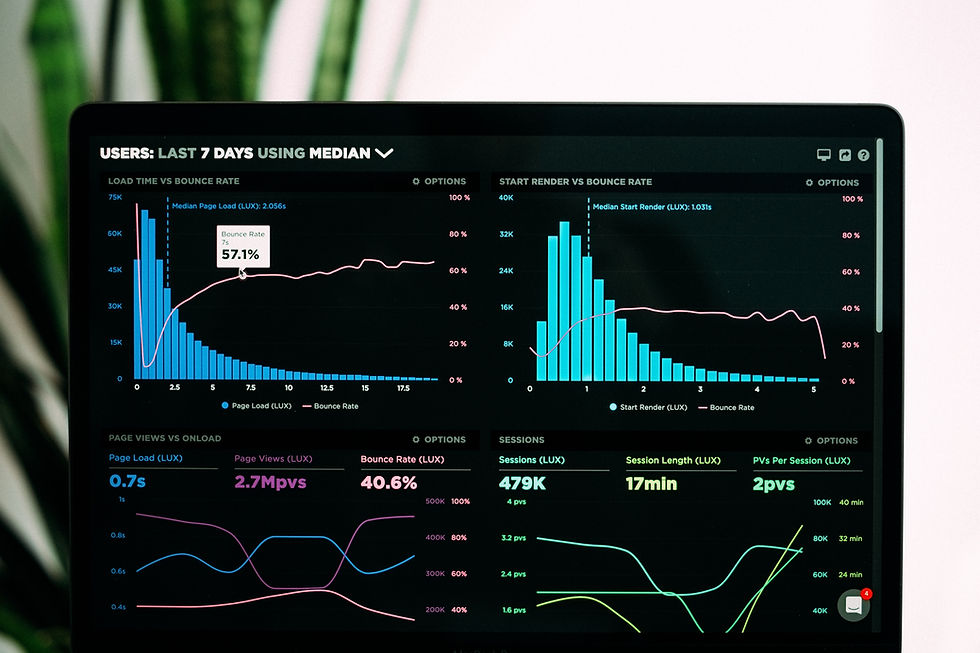A Simple Guide to Decision Making in Business
- Oleg Egorov

- Apr 24
- 6 min read
Updated: Apr 29
Making good decisions forms the backbone of personal and professional success. Every day, we make choices that affect our lives and careers. But how do we ensure we're making the best possible decisions, especially in a business context? This article breaks down the decision-making process into manageable steps and explains how the value accounting information supports these choices.

The Four-Step Decision Framework
All decisions, whether personal or business-related, follow a similar pattern. You can improve your decision-making skills by understanding and following these four key steps:
Step 1: Define the Problem and Your Goals
Every decision starts with a clear understanding of your objectives. Ask yourself: What problem am I trying to solve? What do I want to achieve?
Your goals guide your entire decision process. For example, a business owner might want to increase profits, while an employee might focus on career advancement. Different goals lead to different choices, even when faced with identical options.
Step 2: Identify Your Options
Once you understand your goals, list all possible solutions. Some decisions come with obvious choices, while others require creative thinking to generate alternatives.
In business, successful managers often stand out by spotting promising opportunities that others overlook. This step demands creativity and critical thinking to develop a comprehensive set of options.
Step 3: Evaluate Costs and Benefits
Every option comes with advantages and disadvantages. This step measures what you gain versus what you give up with each choice.
Consider a coffee shop owner named Sarah who wants to increase revenue. She identifies three options:
Option 1: Extending business hours
For the extended hours option, Sarah calculates additional sales of $1,200 per month with extra staff costs of $800, creating a value of $400 compared to doing nothing (the status quo).
Option 2: Adding a new breakfast menu
For the breakfast menu option, Sarah estimates new sales of $2,000 per month, with costs for ingredients, staff training, and equipment totaling $1,100 - creating a value of $900.
Option 3: Starting a delivery service
For the delivery service option, Sarah projects new sales of $1,800 but needs to hire drivers and pay for insurance costing $1,500 - creating a value of $300.
The value of each decision option equals its benefits minus its costs, measured relative to doing nothing (the status quo). In this case, the breakfast menu option provides the highest value at $900 per month.
The opportunity cost of choosing the breakfast menu equals the value of the next best alternative - extending business hours at $400. Since the value of the breakfast menu ($900) exceeds its opportunity cost ($400), this confirms the breakfast menu as the best choice.
The best option always has the highest value and remains the only option whose value exceeds its opportunity cost. This comparison ensures Sarah puts her resources to the best possible use and maximizes her return.
Step 4: Make the Decision
The final step involves selecting the option with the highest value. This represents the choice that best achieves your goals while considering all costs and benefits.
The Decision is Made. What's Next?
Business decisions fall into two main categories: planning and control.
Planning decisions involve choosing what products or services to offer, setting prices, and determining required resources like materials, labor, and equipment. A plan serves as a blueprint that outlines the actions needed to achieve business goals.
Control decisions focus on motivating employees, monitoring performance, and evaluating results. Control decisions often examine past performance to improve future plans.
These two types of decisions form a continuous cycle known as the PIER cycle:
Plan: Decide what products/services to offer, what resources to acquire, and where to sell
Implement: Put the plan into action and set performance standards
Evaluate: Measure actual results and analyze deviations from the plan
Revise: Adjust plans based on what you learned
This cycle might happen in moments (like a quick adjustment to a project) or span months (like a construction project). The key point? Good business decisions require both effective planning and diligent control.
Business Decisions vs. Personal Choices
While the four-step framework applies to any decision process, business decisions differ from personal ones in important ways. Organizations typically have clearer, more focused goals than individuals. Most businesses primarily aim to maximize profit, while individuals balance many factors like family, leisure, personal values, and financial needs.
This difference creates a fundamental challenge because organizations consist of many individuals, each with personal goals that may not naturally align with company objectives. A sales representative might focus on making quick sales that boost their commission rather than building long-term customer relationships. A department manager might protect their budget even when the company needs to reduce costs.
Companies overcome this challenge through four main tools:
Policies and procedures
Monitoring systems
Performance evaluation
Incentive schemes
Together, these tools guide employee decisions toward organizational goals.
For example, a retail chain with declining customer satisfaction might create new customer service procedures, implement mystery shopper visits, add satisfaction metrics to manager evaluations, and adjust bonuses to include customer satisfaction scores. This approach aligns store managers' personal goals (earning bonuses) with the organizational goal (improving customer satisfaction). Without these systems, even well-intentioned employees might make choices that work against company objectives.

How Accounting Supports Decision Making
Accounting plays a crucial role in the decision-making process by providing tools to measure costs and benefits in Step 3 of our framework. Different decision makers need different types of information to evaluate their options effectively.
Think about who makes decisions in and around a business. Some people work inside the organization, like managers and employees who run daily operations. Others stand outside the organization, like investors, banks, and government agencies who interact with the business but don't manage it directly.
These two groups need fundamentally different information to make good decisions. This reality creates the need for two distinct types of accounting systems: financial accounting and managerial accounting.
Financial accounting serves external decision makers like shareholders, banks, and tax authorities. These outsiders need standardized information to assess the company's overall performance and financial health. They want reports that follow consistent rules so they can compare different companies or track performance over time.
Managerial accounting serves internal decision makers like executives, department heads, and team leaders. These insiders need detailed, specific information that helps them run the business better. They want reports tailored to particular decisions they face, even if those reports don't follow standardized formats.
A Real-World Example
Consider the manager of a regional grocery chain deciding whether to add an organic produce section to each store. Financial accounting alone cannot answer this question. The company's income statement shows overall profit but doesn't reveal whether organic produce will succeed.
For this decision, the manager needs managerial accounting information such as:
Sales data from test stores that already offer organic produce
Estimates of additional costs for organic supplier relationships
Space utilization analysis for each store
Customer survey results about interest in organic options
Competitor analysis of organic offerings and pricing
Projected sales growth in each market area
Labor costs for additional employee training
This information combines financial and non-financial data. The accounting team prepares this analysis specifically for this decision, not as part of regularly scheduled reports. The report emphasizes relevant information for this particular choice rather than adhering to standardized formats.
With this tailored managerial accounting information, the grocery chain manager can accurately assess the costs and benefits of adding organic produce sections. This type of decision-specific, timely analysis serves the needs of internal decision makers in ways that standardized financial reports cannot.

The Role of Ethics in Decision Making
Ethics touches every aspect of the decision framework:
In Step 1, ethics shapes your goals. Should a business aim to maximize profit at any cost, or should it balance profit with responsibility to employees, customers, and community?
In Step 2, ethics limits your considered options. Some possible choices may violate moral principles and should never make your list.
In Step 3, ethics affects how you measure costs and benefits. Some options might offer financial benefits but cause harm to others, the environment, or society.
Organizations establish ethical guidelines through:
Laws and regulations at the government level
Company policies and codes of conduct
Professional standards from industry associations
These guidelines define acceptable behavior and specify penalties for violations. Enforcement comes through:
Government agencies and the legal system
Internal company audits and monitoring
Professional certification bodies
However, ultimately ethics depends on individual commitment. Each person must decide to act ethically, even when doing so requires personal sacrifice.
Practical Tips for Better Decision Making in Business
Clearly define your goals before exploring options. Know what success looks like.
Generate multiple options rather than settling for the first solution that comes to mind.
Consider both quantitative and qualitative factors when evaluating options.
Think about long-term implications, not just immediate results.
Use the right accounting information for your specific decision.
Consider ethical implications of each option.
Learn from past decisions by evaluating outcomes and adjusting your approach.
Conclusion
Effective decision making follows a structured process that applies equally to personal choices and complex business decisions. By understanding the four-step framework and how accounting information supports this process, you can make more informed choices that align with your goals.
For businesses, the challenge extends to aligning individual decisions with organizational objectives through effective planning and control systems. Throughout this process, ethical considerations should guide both the options you consider and how you evaluate them.
By mastering these principles and applying them consistently, you can improve your decision-making skills and achieve better outcomes in both personal and professional contexts.



Comments